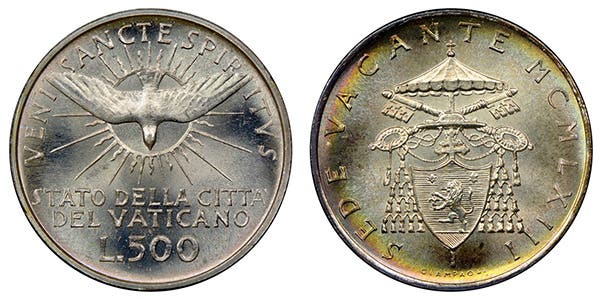South Korea Considers NCLT Issues
South Korea is among a number of countries whose commemorative coins have been issued sporadically in the past.
The competition to market non-circulating legal tender commemorative coins internationally may soon become even more intense than it already is.
The major players in such products are Australia, Austria, Canada, China, the United Kingdom, and the United States. South Korea is now contemplating joining this “Big Six.”
According to sales statistics made available by the Korea Minting and Security Printing Corporation or KOMSCO, during 2022, U.S. commemorative sales were the equivalent of 4.85 trillion won (about $362,213,374 U.S.), those of China were 4.26 trillion won, Canada was 2.98 trillion won, Austria was 2.95 trillion won, 2.63 trillion won for the UK.
South Korea is among several countries whose commemorative coins have been issued sporadically in the past. It has not issued NCLTs on a regular basis but is now considering changing that.
Among the things being considered is product recognition. Each of the six major NCLT producers uses a nationally recognized symbol on their products. KOMSCO said of this, “In Korea’s case, we may consider hallyu (a word identified with popular South Korean culture) and K-pop in our design for a coin.”
South Korea has issued coins in the past to mark special occasions. The 1988 Seoul Summer Olympics and the 2018 Pyeong Chang Winter Olympics are among these. In 2023, KOMSCO sold more than 10,000 medals, marking the 10th anniversary of K-pop boy band BTS. This may have whetted the appetite for more such products since sales of the BTS medals set a record for KOMSCO of about 6 billion won or about $34,354,000 U.S.
Another reason for KOMSCO to consider issuing more commemorative products is that South Korea is rapidly evolving into a cashless society.
During the last week of January, KOMSCO hosted a seminar to discuss how issuing commemorative coins can contribute to its growth. The seminar also discussed how gold, silver, and other precious metal content coins can have artistic value and, for that reason, serve South Korea’s goal of moving forward as an international cultural powerhouse. On January 28, the organization announced “plans to issue commemorative coins as part of efforts to explore new growth engines.”
KOMSCO is controlled by the Ministry of Economy and Finance. According to the KOMSCO website, “KOMSCO, a newly modernized mint, has the capacity to produce about 1.7 billion circulation coins per year and has experience with the export of circulation coins and master punches. Based on our confidence we have achieved continuous contracts with many countries, one of which has been our faithful customer for more than 10 years.”
The website explains, “Commemorative coins are issued for financing purposes. The National Assembly enacts special support acts, and a certain business entity produces a plan and acquires approval from the government to issue the commemorative coins through a review by the Bank of Korea’s Monetary Policy Board. The sales price is set higher than face value and sold as a premium share as it has financing purposes. The issuance of premium commemorative coins is the sole responsibility of KOMSCO, but the sales will be in the hands of the certain business entity.”
The website continues, “When a case is brought to issue a commemorative coin, a government approval acquisition process is carried out and the Bank of Korea’s Monetary Policy Board makes the decision regarding the design, size, and quantity of the coins and then KOMSCO takes the responsibility of the issuance and the sales (except for premium commemorative coins).”
KOMSCO was established in Busan in 1951 during the Korean War. The organization expanded from 10 buildings and a paper mill that year to a new facility in 1983.
According to KOMSCO, “By establishing [a] modernized monetary system we could successfully manufacture new bank notes and coins and obtain recognition of our technology. We also started to supply orders together with commemorative coins, tickets, [and] ID cards… We carried out major projects including building [a] new printing plant, movement of [the] research institute, and establishing [a] currency museum.”
“In the 1990s, we focused on diversification and development of products as well as the expansion of export markets into the global market.”
You may also like:








